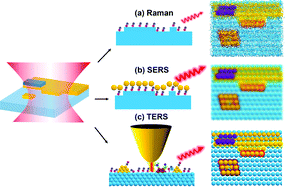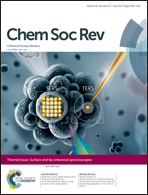Tip-enhanced Raman spectroscopy for surfaces and interfaces
Abstract
Surface and interfaces play key roles in heterogeneous catalysis, electrochemistry and photo(electro)chemistry. Tip-enhanced Raman spectroscopy (TERS) combines plasmon-enhanced Raman spectroscopy with scanning probe microscopy to simultaneously provide a chemical fingerprint and morphological information for the sample at the nanometer spatial resolution. It is an ideal tool for achieving an in-depth understanding of the surface and interfacial processes, so that the relationship between structure and chemical performance can be established. We begin with the background of surfaces and interfaces and TERS, followed by a detailed discussion on some issues in experimental TERS, including tip preparation and TERS instrument configuration. We then focus on the progress of TERS for studying the surfaces and interfaces under different conditions, from ambient, to UHV, solid–liquid and electrochemical environments, followed by a brief introduction to the current understanding of the unprecedented high spatial resolution and surface selection rules. We conclude by discussing the future challenges for TERS practical applications in surfaces and interfaces.

- This article is part of the themed collections: Celebrating a Century of Excellency in Chemistry at Xiamen University and Surface and tip enhanced spectroscopies


 Please wait while we load your content...
Please wait while we load your content...